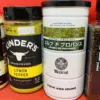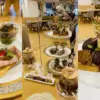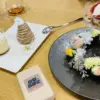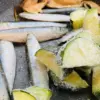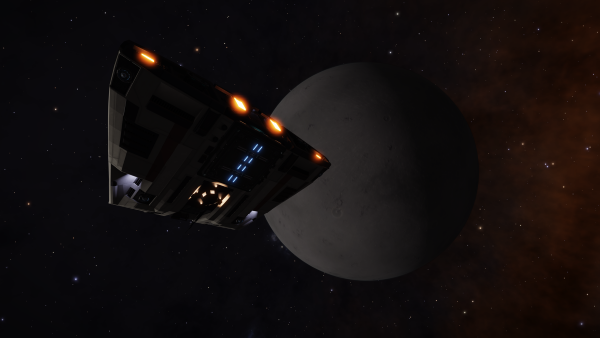キウイとサルナシ(ベビーキウイ)の違いと栄養|植物・果物の特徴
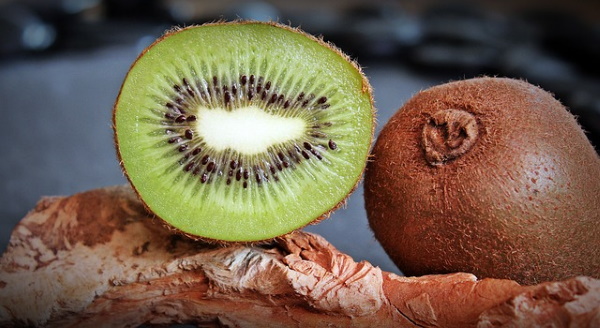
秋が旬の「さるなし」はベビーキウイとも呼ばれ、果肉が緑のものと、赤のものがあります。ミニサイズのキウイそのもので、味はほぼキウイです。大きいサイズのキウイと異なり、皮ごとまるっと食べられます。
キウイとサルナシの違い
キウイは、学名Actinidia deliciosa、英名Kiwifruits、マタタビ科マタタビ属のつる性植物になる実(5cm~8cm)です。それに対して、サルナシ(別名コクワ・シラクチカズラ)は、学名Actinidia arguta、英名Kiwi Berry(Baby Kiwi)といい、キウイと同じくマタタビ科マタタビ属の植物になる実(2cm~3cm)です。
- キウイ:皮に毛がある(大きい)
- サルナシ:皮に毛がない(小さい)
という見た目の違いもありますが、味はほとんど同じで、どちらもキウイの味がします。サルナシには
- サルナシ
- シマサルナシ
- ウラジオマタタビ
- ミヤママタタビ
- 光香
- 峰香
- 蛇喰
- 昭和系
- 新山
- 茂緑
といった分類、品種があり、生産地である岩手、山形、福島などでは、商品作物として栽培されています。そこらへんの山に自生している場合もあります。
サルナシの魅力と栽培のしやすさ
サルナシ(コクワ・ベビーキウイ)は、耐寒性があり、植生期間が短く、寒冷地でも栽培しやすい魅力があります。1980年代頃から小規模に栽培が始められており、日本でも年間10t程度の生産量で、まだまだ知名度が低く、珍しい植物の部類に入ります。
キウイとサルナシ(ベビーキウイ)の栄養素の違い
キウイ(学名Actinidia deliciosa)とサルナシ(学名Actinidia arguta)には以下のような栄養が含まれています。(100g中に含まれる栄養素)
| キウイ | サルナシ | |
| エネルギー | 53kcal | 49kcal |
| 炭水化物 | 13.5g | 11.8~22g |
| タンパク質 | 1.0g | 601~1220mg |
| 脂質 | 0.1g | 0.1g |
| 水分 | 84.7g | – |
| ナトリウム | 4mg | 1.2~9.6mg |
| カリウム | 290mg | 162.7~382mg |
| カルシウム | 33mg | 51.5~120.1mg |
| マグネシウム | 13mg | 10.0~23.2mg |
| リン | 32mg | 31.7~80.2mg |
| 鉄分 | 0.31mg | 0.31~1.15mg |
| 銅 | 0.3mg | 0.05~0.16mg |
| 亜鉛 | 0.1mg | 0.18~1.45mg |
| 葉酸 | 36μg | – |
| ビタミンC | 69mg | 63~123mg |
| ビタミンB1 | 0.01mg | 0.01~0.05mg |
| ビタミンB2 | 0.02mg | 0.02~0.11mg |
| ナイアシン | 0.3mg | 0.50~1.55mg |
| パントテン酸 | 0.29mg | 3.80~5.60mg |
| ビタミンB6 | 0.12mg | 1.10~1.90mg |
| ビタミンE | 1.46mg | 4.6~5.3mg |
| クロロフィル | 1.65mg | 6.25mg |
| βカロテン | 88μg | 362μg |
| ルテイン | 418μg | 1228μg |
| myo-イノシトール | 116mg | 575mg |
| アクチニジン | 238mg | 460mg |
出典:岩手大学大学院|サルナシの抗生活習慣病食品素材・成分としての開発と作用機構
出典:The Nutritional and Health Benefits of Kiwiberry (Actinidia arguta) – a Review
一般的に知られているキウイとサルナシでは、サルナシの方がミネラルが多く、パントテン酸、ビタミンE、βカロテン、ルテインなどの含有量も多いことが分かっています。
The Nutritional and Health Benefits of Kiwiberry (Actinidia arguta)の研究によると、サルナシ(コクワ・ベビーキウイ)には葉酸はほとんど含まれていなかったとのことです。
myo-イノシトールは、脂肪代謝促進に役立つ可能性があるとして、近年注目されていますが、ビタミンB群の一種でたくさん食べたからといって痩せるわけではありません。
サルナシの抗酸化作用と抗酸化物質について
サルナシ(コクワ・ベビーキウイ)に含まれている抗酸化物質は
- アントシアニン|129.8 μg /g DW
- クロロフィル|2.6 ~ 4.2 mg/100 g FW
- ルテイン|0.93 mg/100 g FW
- βカロテン|0.29 mg/100 g FW
- ゼアキサンチン|0.02–0.04 mg/100 g FW
- ビオラキサンチン|0.01–0.12 mg/100 g FW
などで、カロテノイド類は確かに他の果物に比べると多めに含まれています。特に、加熱もせず、処理もせず、皮ごとそのまま食べられる上に、生産・栽培もしやすい、食べてもおいしいとなれば、栄養補給には最適です。
Antioxidant Activity
Given the type and number of this fruit’s medicinally promising nutrients, there are ongoing investigations into its antioxidant and anti-inflammatory properties that might help protect against cardiovascular diseases, cancer and other degenerative disorders. Many of the abovementioned bioactive compounds possess free radical scavenging abilities. The kiwiberry AA of scavenging free radicals in the body could help reduce certain diseases thought to be modulated by free radicals [43]. Kiwiberry extracts show stronger antioxidant activity than kiwifruit, as measured by different methods related to different groups of compounds. Just as the kiwiberry’s chemical composition differs depending on various genetic and environmental factors, its ability to scavenge free radicals is also variable. Unfortunately, different measurement methods and extraction procedures (the solvents used, the duration and the temperature of extraction) can make these results difficult to compare. The average AA of different extracts from the kiwiberry versus kiwifruit is summarised in Table 2 (online resource).According to Latocha et al. [17], the AA of kiwiberry hydrophilic extracts based on the ABTS assay ranges from 1.73 to 4.22 mg AAE/g FW on average and is similar to that of kiwifruit (1.83–2.06 mg AAE/g FW). These results are comparable to values obtained by An et al. [43] for the kiwiberry in South Korea (1.10–2.10 mg AAE/g FW). Meanwhile Leontowicz et al. [41], using the same assay and solvent, indicate a much higher AA of the kiwiberry (47.2–122.4 μM TE/g DW) compared to kiwifruit (13.5–16.1 μM TE/g DW). In contrast, the AA of lipophilic extracts based on the ABTS assay range from 10.8–29.9 and 11.1–13.5 μM TE/g DW [41] or 0.93–2.64 and 0.95–1.36 mg AAE/g FW [17, 54, Latocha unpubl.] for kiwiberry and kiwifruit respectively, showing great similarity. The second result is comparable to that obtained for oranges (1.42 mg AAE/g FW), but lower than the one for strawberries (4.72 mg AAE/g FW) [54].
The kiwiberry AA measured by the DPPH assay indicates the same proportions as that obtained by the ABTS assay. Leontowicz et al. [41] maintains that both hydrophilic and lipophilic extracts of the kiwiberry (10.5–42.5 and 9.0–15.7 μM TE/g DW, respectively) show much higher AA than kiwifruit (6.6–7.9 and 6.0–6.9 μM TE/g DW, respectively). Other research work undertaken by Fisk et al. [44] in Oregon in the US, Latocha et al. [17] in Poland and An et al. [43] in South Korea, which used the same method for lipophilic kiwiberry extracts, show similar results – Table 2 (online resource). The research performed on selected fruits in Japan [45] show that the kiwiberry AA measured by hydrophilic ORAC assay (88.7–99.7 μM TE/g FW) is more than 13 times higher than that of kiwifruit (5.2–7.1 μM TE/g FW) and 30% higher than blueberry (65.6 μM TE/g FW). In turn, the AA of kiwiberry and kiwifruit lipophilic extracts indicate greater similarity (ORAC assay). Other experiments that used CUPRAC and FRAP assays and both types of solvent [41] confirmed that the kiwiberry has significantly higher AA than kiwifruit, irrespective of the assay used. The results of the kiwiberry AA against naturally occurring hydroxyl radicals (•OH), which is claimed to be the most reactive form in biology, confirm that kiwiberry extracts can reduce these radicals by up to 70.7% [17]. Confirmed by considerable additional research, kiwiberry antioxidant activity is strongly correlated with TPC and TAA content in fruits [16, 19, 41, 45, 55].
引用元によると、フリーラジカル除去に関して、キウイフルーツよりは除去能力が高いと考えられる結果が出ているとのことです。ただし、健康上の利点が科学的に証明されたわけではなく、危険性やリスクについての研究もまだ途中です。適量を食べる分には健康被害は報告されていません。
サルナシの生産量ランキング
サルナシ(コクワ・ベビーキウイ)の生産量が多い地域は
- 1位:福島県(約5.6t)
- 2位:香川県(約1.9t)
- 3位:山形県(約1.5t)
ですが、全国でのサルナシの生産量は約10tとかなり希少です。例えば、山梨のある農家が本気を出してサルナシだけを栽培すれば、覆せるほどに生産量が少ないです。
キウイアレルギーの方はサルナシ(コクワ)にも気をつけて
キウイフルーツアレルギー患者のIgE がサルナシ果実のタンパク質に特異的に結合するとの報告 6)がある
引用元:https://www.jstage.jst.go.jp/article/jhej/61/8/61_501/_pdf/-char/ja
キウイフルーツアレルギーの方は、同じ種類の植物であるサルナシ(コクワ・ベビーキウイ)にもアレルギーがある可能性があるため、見た目はだいぶ異なりますが、食べるのは控えたほうが良いでしょう。






